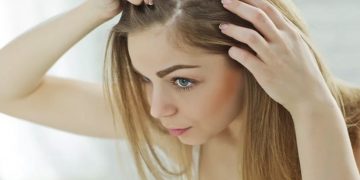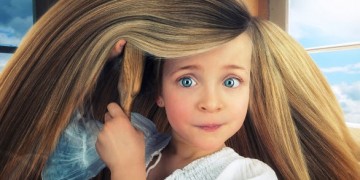Different options for home peeling of the scalp and tips on how to do it
We regularly cleanse the skin of the face, ridding it of dead skin cells, sebum and blackheads, why is the scalp worse? It's no secret that the health of the hair directly depends on the condition of the scalp, it also needs deep cleaning and the scrub is indispensable in this matter.
Scrub for the scalp helps to thoroughly cleanse the skin of dead cells, sebum, styling products, silicones and other impurities. The advantage of homemade scrubs over purchased ones is that you know every ingredient that goes into it.
What does scalp peeling give?
- thorough and deep cleansing of the scalp;
- hair stays clean longer;
- improves blood circulation to the scalp;
- therapeutic nutrients penetrate better to the hair roots;
- helps to accelerate hair growth, awakening new hair to grow;
- the scalp after peeling breathes in the literal sense of the word.
Summing up, we can say that peeling is needed not only for the face, but also for the scalp. Now let's see what they are. Usually, peels are divided into mechanical and chemical. A chemical peel is usually done in a salon; it contains fruit acids that dissolve and remove impurities. Mechanical peeling contains an exfoliant (a substance with grains) that, when exposed, exfoliates and cleanses the scalp. If you want to use a ready-made scrub, now almost every brand has such a tool, you can read in more detail about the rating of purchased scrubs here... And today we will talk about home peeling, which is in no way inferior to a ready-made scrub, I offer several options from which you can choose something for yourself.
How to properly peel your scalp at home?
Peeling should not be done if the scalp has wounds, inflammation, or damage. You also need to do it with caution if the scalp is sensitive, you can try oil-based.
Peeling is done on dirty hair before shampooing, knead the scrub before applying it.
Peeling is done on damp skin, you first need to wet the scalp, a few minutes under a warm shower.
On the partings, we begin to rub the mixture, but only rub it into the scalp, we do not touch the hair, a lot of salt will crumble, but even what remains will be enough to do the procedure.
Then we thoroughly massage the scalp, but without pressing hard, there should be no pain. We massage for about five minutes and leave the mixture on the hair for another five minutes, and then wash my head as usual.
Peeling can be done every two weeks if the scalp is normal or oily and once a month if the scalp is dry or sensitive.
Home peeling with sea salt and clay
Clay should be chosen depending on the condition of your scalp: blue clay - used for hair loss, to accelerate hair growth, it also nourishes the hair from the inside and prevents breakage. Green clay ˜– helps to get rid of dandruff and seborrhea of the scalp, reduces the sebaceous glands, strengthens hair, recommended for oily hair prone to dandruff. White clay - it is used for hair loss, as well as for strengthening and restoring hair and scalp. Suitable for fine, depleted and damaged hair. Pink clay - suitable for sensitive scalp, gently cleanses hair and scalp, relieves irritation, improves microcirculation, prevents hair breakage.Gray clay - it is used for brittle split ends, it also takes good care of the scalp, for the prevention of scalp flaking, accelerates hair growth.
- 2 tablespoons of sea salt;
- 1 tablespoon of clay (blue, green, white, pink, gray);
- milk;
- 5-8 drops of bay or rosemary essential oil, orange, washed ...
Pour salt and clay into glassware, dilute essential oil in milk and then add to the rest, add enough milk so that it is like a thick, viscous mixture.
Peeling with sea salt and colorless henna
Peeling salt should be taken from sea and medium grinding so that there are particles that you will scrub. It is better to take colorless Iranian henna, it has excellent quality and strengthening properties. Olive oil It penetrates into the hair follicle and scalp cells, that is, it nourishes the hair with useful substances from the inside, and the oil envelops the hair shaft itself well and thereby improves the hair structure. It is the most popular base oil in hair care and can be applied to the scalp. Vitamin C - promotes cell renewal, increases blood flow, helps well with hair loss.
- 2 tablespoons of salt;
- 1 tablespoon of colorless henna;
- 2 ampoules of vitamin C;
- olive oil.
Add henna and olive oil to the salt, about a spoon, so that the mixture is thick and at the end, just before the application, add vitamin C.
Homemade scrub with sea salt and activated carbon
Activated charcoal is an excellent absorbent to remove excess sebum, dead skin cells and styling products.
Essential oils against hair loss: bay, rosemary, tea tree, pine, cedar, cinnamon, juniper. From oily hair: lemon, orange, grapefruit, tea tree, rosemary, lemon balm, mint, cedar. Dandruff: lavender, tea tree, lemon, orange, grapefruit, geranium, rosemary. Dry scalp: jasmine, lavender, rose, sage, myrrh, chamomile, ylang-ylang.
- 2 tablespoons of sea salt;
- 5 tablets of activated carbon;
- 5-8 drops of peppermint essential oil;
- water.
Drop a few drops of essential oil onto the salt. Add crushed activated carbon to salt and dilute with water, but not much so that the mixture is thick.

 home
home All articles
All articles
















